Sandhill cranes are spectacular birds, whether it’s a pair displaying in a field or hundreds of thousands outside a viewing blind in Nebraska.
The cranes are undeniably crowd pleasers: big and beautiful, with a trilling call that to me is a sound of wildness.
But did you know that sandhill cranes actually dye their feathers each spring?
Yes, they add a rusty-brown color to their gray feathers. They do this, as the Backyard Biology blog describes it, “by preening iron-rich mud into their breast and back feathers during the breeding season.”
Sandhill Cranes
Many TNC Preserves provide important habitat for Sandhill Cranes.
Like many birds, sandhill cranes will go through a feather molt later in the spring, shedding the now rusty feathers.
My colleague Chris Helzer, director of science and stewardship for The Nature Conservancy in Nebraska, recently came across a deceased crane during fieldwork. Chris, ever the naturalist, took the opportunity to take close-up photographs of crane feathers.
In the photo, you can clearly see the rusty feathers. Note that it does not look like the crane has taken a mud bath. The feathers appear dyed. If you saw this photograph without explanation, you’d probably think the brown was a “natural” feather color.
In fact, accounts by early European naturalists incorrectly described the bird as a “little brown crane.”
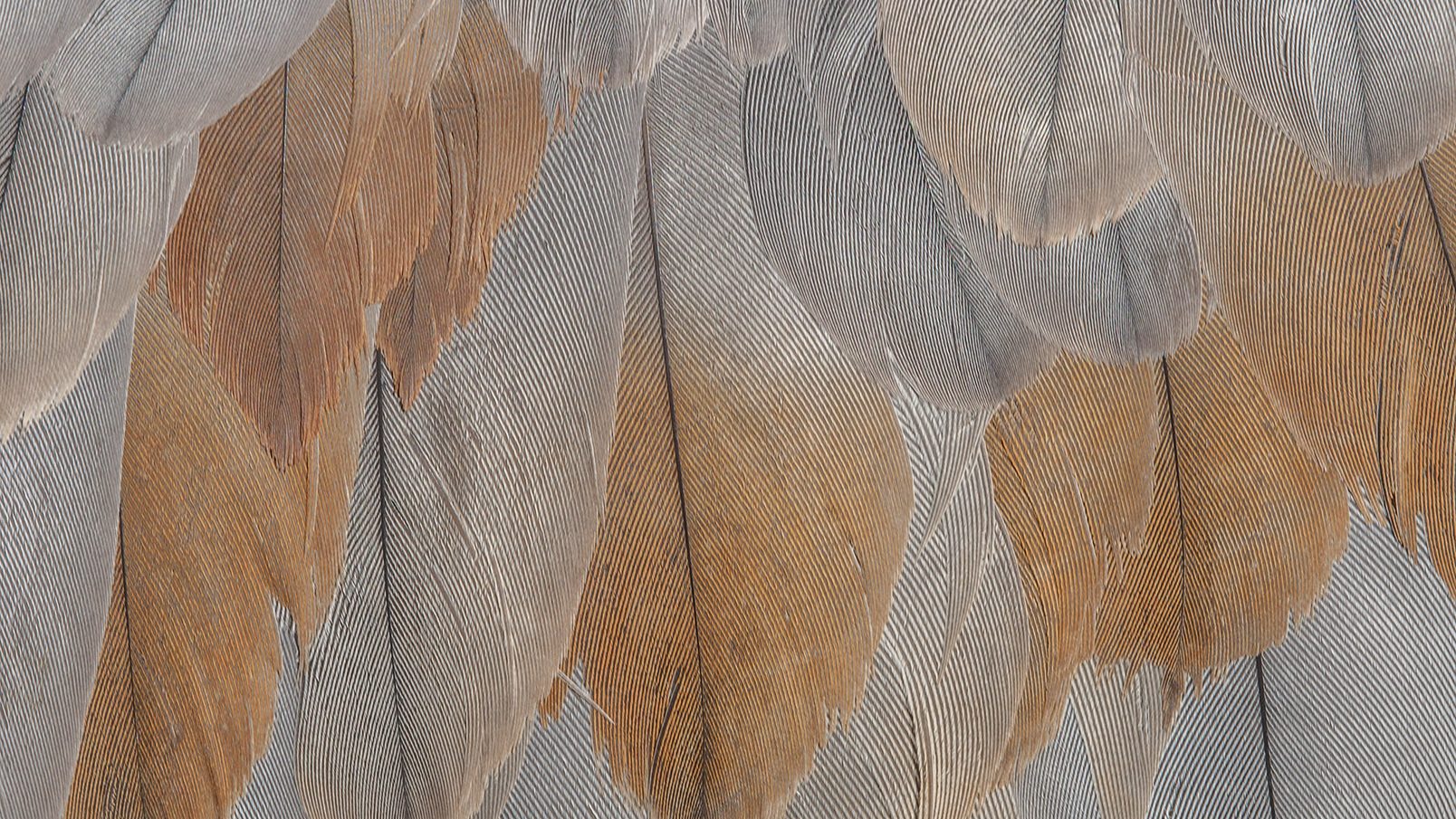
Why the Dye?
Helzer, in a social media post, pondered this interesting crane habit:
Why do they do this? For camouflage? For fashion? As a statement of some kind that, if we could interpret it, would unlock secrets ne’er before understood about bird kind?
I don’t know.
I’ve seen cranes do this feather-coloring, though, and it was pretty cool to watch.
They were in a recently-created wetland slough at The Nature Conservancy’s Platte River Prairies in Nebraska during March. I thought they were feeding until I noticed they were taking bites and then preening (messing with their feathers).
Later, after they’d left, I walked through the slough and saw that there were lots of iron deposits in the sand, which were at a depth where periodic groundwater rises and falls allowed the iron to rust.
The only places cranes had disturbed the ground were where these deposits were concentrated. They’d been staining their feathers with rusty iron. Very cool.
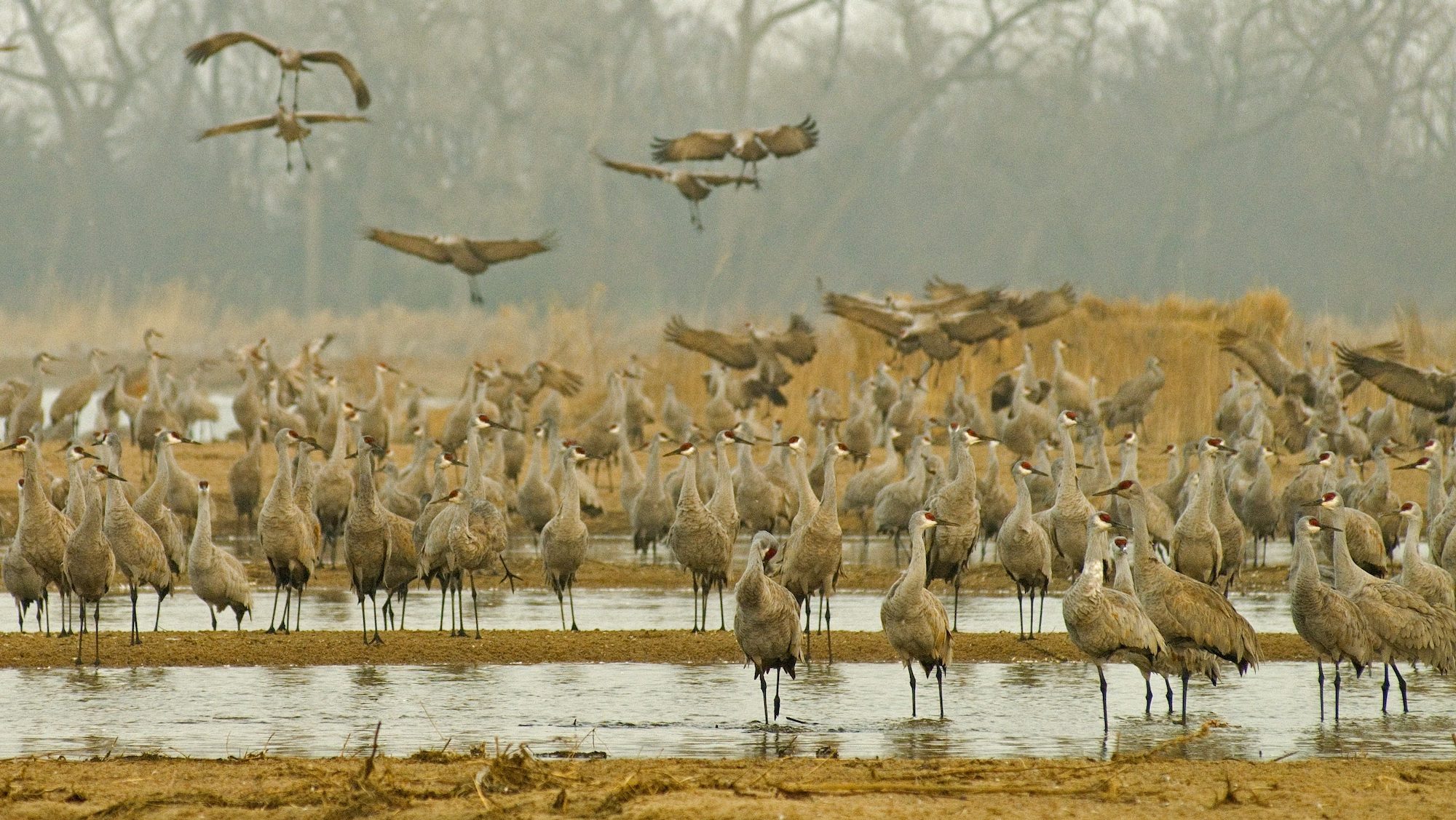
Many have offered explanations, but there is no definitive answer.
According to the Backyard Biology blog, D.O. Hyde theorized in 1968 that cranes stain their plumage “as an intentional desire to change the color of the feathers associated with the act of pairing or connubial bliss”.
A paper published in Florida Field Naturalist (1975) notes that cranes with access to iron-rich mud will dye their feathers outside the breeding season, calling to question the “connubial bliss” idea. The author, Stephen A. Nesbitt, offers that it could serve a cosmetic purpose or perhaps is used in place of dust bathing, as other birds do to condition their feathers.
It’s a fascinating habit to ponder for a bird that, to my mind, remains one of the most intriguing species in North America.
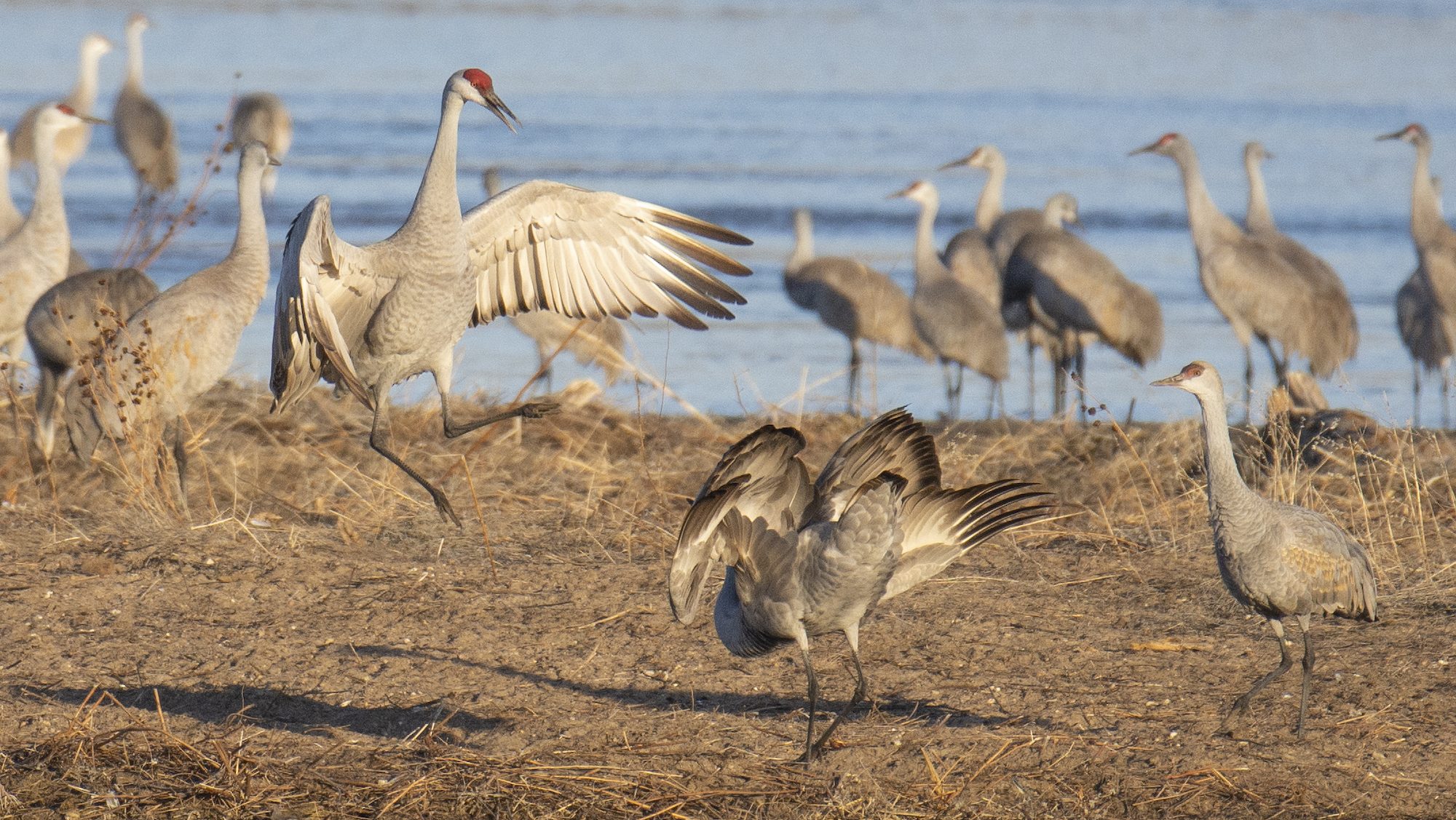
The Great Migration
The other evening, playing a game of street basketball with my son and neighborhood friends, I suddenly dropped a pass and turned my attention to the sky. By now, my son is well used to me interrupting play to listen to birds.
Overhead, a deep, rolling trill filled the air: sandhill cranes. In early spring, it’s not unusual for small flocks of these birds to pass over my home in Boise, Idaho. But this is not the main migration route.
In the Central Flyway to the east, more than 500,000 cranes – more than 80 percent of their population – will congregate in late February through early April along the Platte River in Nebraska.
Why do sandhill cranes congregate along the Platte River?
This area of Nebraska offers perfect conditions for cranes embarking on a long migration. Some cranes will nest as far north as Alaska and Siberia, so they need a lot of calories to make the trip. They stage in Nebraska to rest and put on weight.
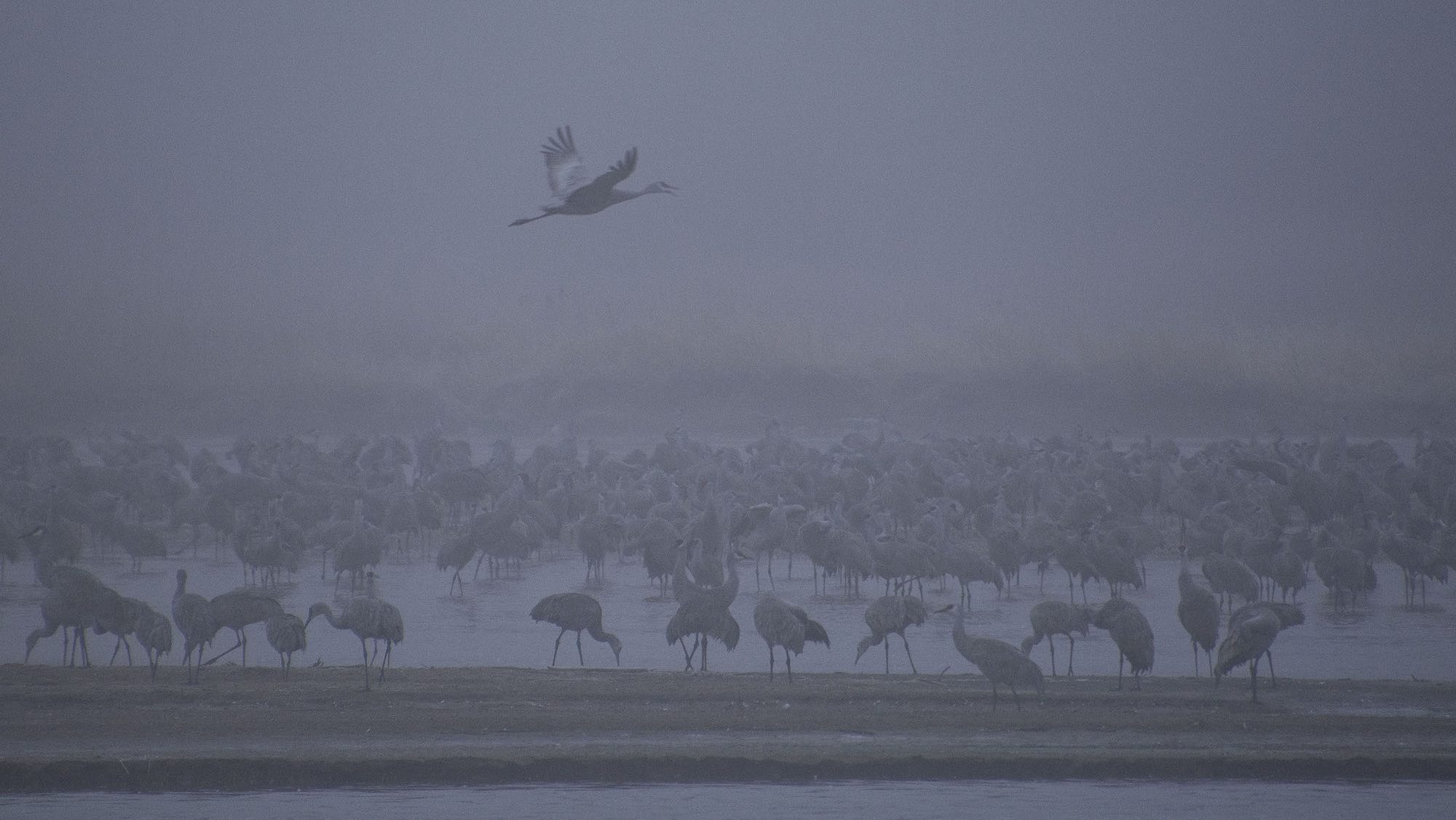
The birds find a lot of waste corn in farm fields, as well as small invertebrates in marshes near the river. A crane can add 20 percent to its weight during two or three weeks in the area.
At night, the cranes move to the Platte River. It offers everything cranes need to survive the night. The Platte is wide and shallow, allowing the birds to stand in the water and avoid predators like coyotes. Each morning, the cranes fly from the river back to the fields, their haunting calls echoing through the air.
As Helzer notes on his Prairie Ecologist blog, “For those of us living and working on the Central Platte River in Nebraska, the birds that signify spring’s arrival are much bigger than robins.”
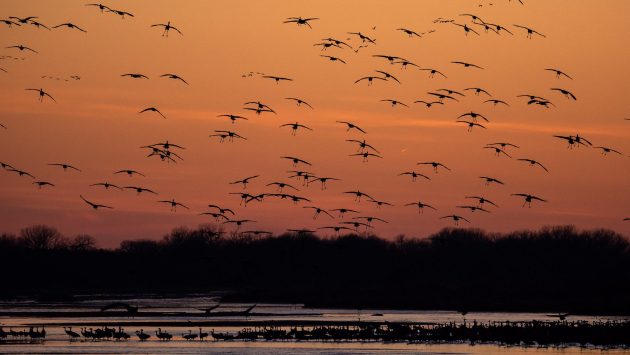
Sandhill cranes are the most numerous of the world’s crane species. According to the North American Breeding Bird Survey, their populations have been increasing at an annual rate of five percent per year since the mid-1960s, due to wetland restoration and abundant food on agricultural lands. (Isolated, non-migratory sub-populations in Mississippi, Florida and Cuba have not fared as well and are in decline).
Any time a large percentage of a species gathers in one small place, there can be risks – from habitat loss, disease or other threats.
Maintaining river habitat and sufficient water along the Platte and keeping invasive species out of the river corridor will be vital for the continued health of crane populations.
But the story of the sandhill crane is a wildlife conservation success story, and seeing these birds in Nebraska is one of the world’s great natural spectacles. But even if you see an individual crane, look closely. What colors do you see?
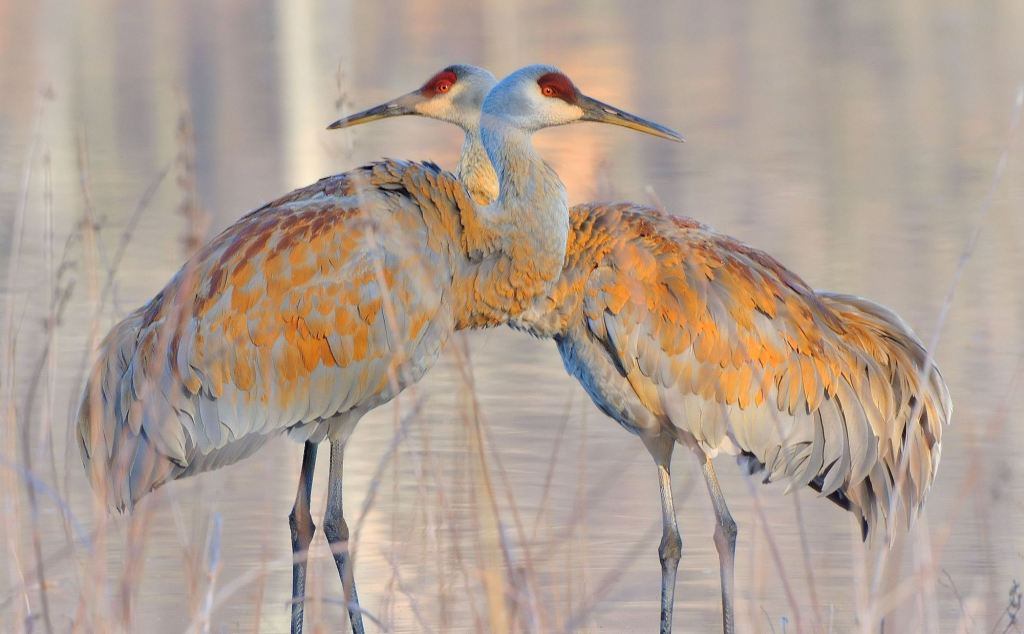



Yes, Sandhills do preen rusty colored dirt into their feathers most likely for camouflage while sitting on their nests mostly made of dead plant debris & cattails. Their newly hatched chick’s are also a brown color which would match their parent’s early in their lives. Please see savingcranes.org for additional information on cranes. The International Crane Foundation Baraboo Wisconsin.
It must be more than a mating ritual. I just saw a pair with a baby, all rusty brown. This was near wetlands in Ohio, where they’d need camouflage from coyotes, and maybe bald eagles (?)
Several decades ago I watched sandhill cranes preen iron-rich mud into their feathers in Grand Teton National Park. A town had been dismantled when GTNP was established; an large piece of abandoned iron (manhole cover?) was sitting in a low, wet spot, providing an abundance of red mud. I’ll bet it’s still there, still being used by cranes every spring.
“Sound of Wildness” and anticipation. A favorite memory of that sound drifting through foggy skies drawing ever nearer. That wild sound was a precursor to the appearance of Sandhill Cranes ghosting through the fog sending out the trill that thrills as they coursed along Marsh Creek. Like your dropped pass my focus on the fly I was drifting through a pool vanished into the fog anticipating the regal flight that glided by.
This is a wonderful article. Thank you. We live in Arizona and visit Willcox to see these cranes. There’s a crane cam which is fantastic at White Water Draw. Otherwise, we’ve begun turning to the crane conservancy on the Platte for more detailed information. We wish Arizona Fish and Game could provide more migration information, but between their crane cam, this great blog of yours and the Platte trust, we’ve had the best time. Again, many deeply appreciative thanks.
I found this very interesting and have been on the high arctic breeding grounds in the spring and there certainly is an abundance of iron rich soil in the wetlands. I have taken a number of photos of them in this area and would be interested in chatting about it.
Cheers
Murray Gillespie
Sandhill Cranes are so beautiful and intriguing to watch. We have a pair nesting annually on a mudflat near our home. Every year I photograph them and sometimes their chicks. I never know if the chicks survive because of human interference in the surrounding area. In the fall, I photograph the hundreds of Sandhill Cranes that gather at the farm fields near us and pray for their survival. All of nature is so fragile.
For us, in New Mexico, cranes are a sign of fall. I am fortunate enough to live in an area where they pass over twice a day in the winter, flying south to the fields during the day, and north to roost in the Rio Grande at night. Sometimes we can hear them in the river after dark. They are one of my favorite things about being here (I moved here from the east coast). We see them with the rusty feathers in the winter, too.